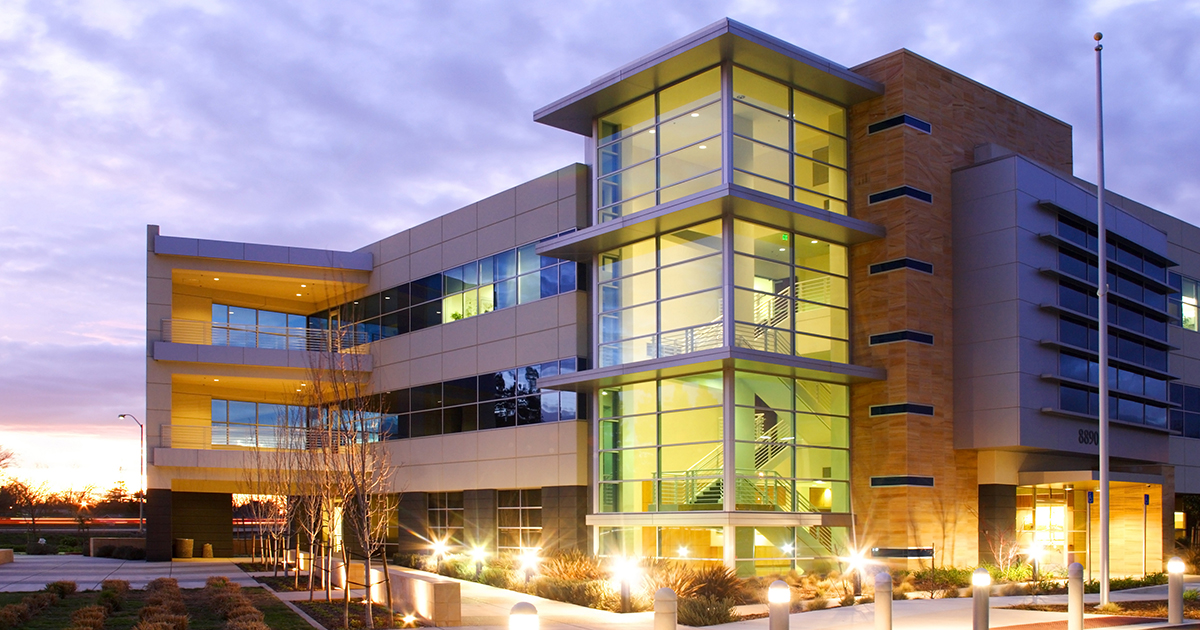Software-Defined LAN and Fiber/Power-Deep Networks Define New Norm and a Better Future

There is no doubt that this year has been a difficult one for enterprise businesses of all sizes across all vertical markets. However, the COVID-19 pandemic has also accelerated our digital future. With millions more people using technology to work, connect, entertain and shop from home, demands on service provider networks and data centers to accommodate the increased internet traffic and VPN usage is higher than ever.
As the world begins opening up and businesses bring people back to work amidst a virus that will remain a threat until a vaccine becomes globally available, public and private entities of all types are facing the challenge of rebuilding trust in their buildings and their business. This trust can only come with a flexible, robust network infrastructure able to support increasing demand for new smart technologies that keep people safe while allowing digital business to thrive.
A host of post-lockdown technologies
The world of commercial real estate has already embraced the smart building concept, where multiple in-building systems converge and communicate over a single fiber/power infrastructure to optimize operations, sustainability and tenant experience. Now the coronavirus crisis is demanding new and enhanced smart technologies to keep people healthy and productive post-lockdown. Both public and private facilities will deploy smarter building systems and devices like:
- Thermal imaging cameras with facial recognition to measure the body temperature of building occupants
- Touchless building control systems to reduce the spread of virus on surfaces
- 5G in-building cellular solutions to monitor crowd size and support contact tracing
- Smart HVAC to ensure more reliable ventilation and prevent the circulation of infected air
- Smart sensors in rooms, hallways and elevators to monitor capacity to help maintain social distancing
Smart technologies that can help improve safety, security and comfort for building occupants will continue to evolve. We will continue to see more sensors come online, including ones that analyze occupancy and traffic patterns to provide the data that facilities managers must have to reconfigure spaces as needed. Sensors that help determine which areas should be cleaned and disinfected, and how often, will be in demand as well.
While these new technologies can help rebuild trust in a building’s ability to keep people safe and healthy, most companies also recognize that the new post-lockdown norm doesn’t necessarily mean business as usual. Not everyone will return to work at once, face-to-face encounters will remain limited, and public venues will not accommodate full capacity for quite some time. This will require more advanced audiovisual systems that are contact free and provide immersive virtual experiences for everything from business meetings and training to trade shows and large sporting events. New and effective digital and online experiences for customers will also be vital to maintaining relationships and boosting marketing and sales channels that strengthen business resilience.
A new approach to in-building networks
As smart technologies and advanced digital applications are deployed, in-building networks must deliver more bandwidth and ensure maximum reliability. Safe, low-cost power delivery will also be needed to power devices at the network edge, many of which will require more DC power over greater distances - think thermal imaging cameras and crowd monitoring devices for outside venues. Considering the impact that the coronavirus has had on the economy, all of this must also be achieved as cost-effectively as possible. A fiber- and power-deep network is ideally suited to support the needs of smarter post-lockdown buildings and digital business.
In addition to its reach and virtually unlimited bandwidth, a fiber-deep infrastructure eliminates the need for multiple, disparate copper-based systems. This significantly reduces the amount of cables, conduit, cable trays, telecom rooms, and space required to support multiple integrated applications, lowering construction cost and energy consumption. Corning’s in-building network solution furthers the benefits of fiber with the following key components that enable simplified operations, cost-effective power delivery, and enhanced cellular solutions for safer, more sustainable post-lockdown facilities.
- Software-Defined LAN (SD-LAN): Decoupling hardware and software for better network control and customization, the Corning SD-LAN is self-organizing and centrally managed to simplify operation, integration and scalability. Using intelligent network control over a software-defined data plane, SD-LAN provides high-bandwidth connectivity to building devices through software-defined access nodes (SDANs) that sit close to the network edge. The system allows for complete visibility and centralized management and control down the port level, reducing maintenance and the need to physically access edge devices.
- Remote Powering Solution: Corning remote powering solution consists of power supplies and copper fiber composite cables for low-cost, safe delivery of reliable data and high and low voltage, as well as bulk power, to remote edge devices. The solution allows for efficient Class 3 DC power distribution to active electronics, lighting grids and building automation systems. It supports PoE-enabled smart devices at the edge through SDANs with multiple software-managed ports for fast network connections, and PoE at distances exceeding 2,000 feet.
- In-Building Cellular Solutions: To deliver 5G in-building connectivity, Corning cellular solutions include both single- and multi-operator support to deliver a variety of services and frequency bands for maximum capacity and coverage across any property, from office buildings to large public venues. These small cell, distributed antenna systems (DAS) and hybrid wireless solutions reduce power and space requirements with easy set-up, management and expansion.
As companies invest in technology to put themselves in a stronger position coming out of the pandemic, software-defined fiber- and power-deep networks that cost-effectively support emerging smart devices, cellular connectivity, and high-bandwidth digital experiences will be imperative to ensure health, safety and business resilience in the new norm.
This Week’s Sponsor
Corning Optical Communications delivers connectivity to every edge of the network, with optical fiber, cable, hardware & equipment to fully optimize solutions for high-speed communications networks. For the enterprise, a future-ready fiber network can enable the ability to converge multiple technologies over a single, simplified infrastructure, helping to deliver high-demand building applications like Wi-Fi, security and Corning’s in-building cellular solutions.
Read Next
 5/15/2025
5/15/2025
Tech, Talent and Transformation: 2025 Digie Finalists Announced For 27 years, Realcomm has presented the Digie Awards to acknowledge companies, real estate projects, technologies, and individuals that have advanced the commercial real estate industry through the strategic use of technology, automation, and innovation.
 5/15/2025
5/15/2025
Empowering Space Management with Data-Driven Visualization For effective CRE space management, it’s critical to centralize lease data, maximize rental square footage (RSF), improve energy efficiency and reconfigure spaces to meet changing needs.
 5/8/2025
5/8/2025
The AI-Powered Workplace Evolution: Redefining the Business Landscape In today's rapidly evolving business environment, the fusion of Artificial Intelligence (AI) and Workplace Management is revolutionizing the way organizations approach workspace optimization and operational efficiency.
 3/27/2025
3/27/2025
The Convergence of Edge Computing, Cloud, and AI in Building Automation and Smart Buildings In the built environment, we have seen the convergence of Operational Technology (OT) and Information Technology (IT), later expanding to include Workplace Technologies (WP).


%20(1)%20(1)%20(1).png)










